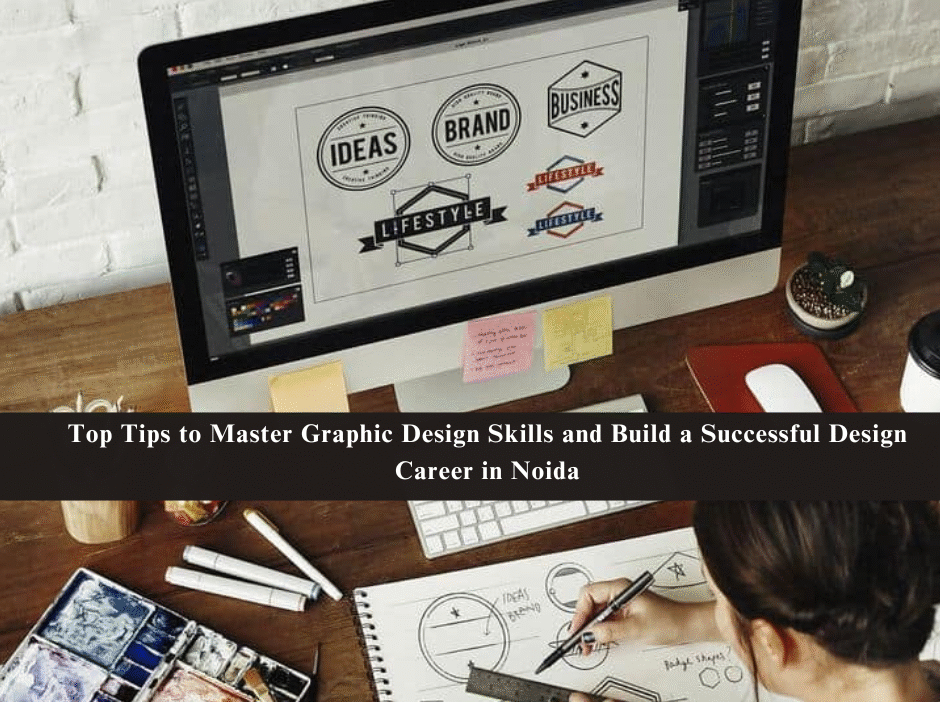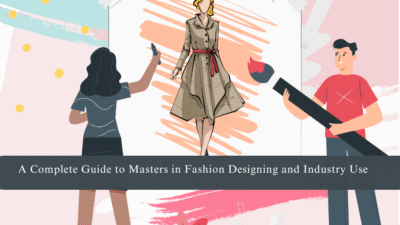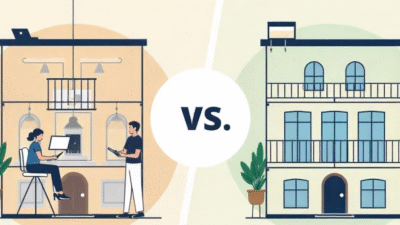In today’s digital-first world, graphic design skills are more than a creative asset—they are a professional necessity. Whether you’re looking to create meaningful brand identities, design intuitive user experiences, or tell visual stories that resonate, design is a career that blends creativity with purpose. And if you’re based near NCR, the growing design ecosystem and colleges in Noida offer the perfect launchpad.
This blog brings you practical tips on how to master design, select the right institution, and build a future-ready career by tapping into the real-world scope of design careers across multiple industries.
🎨 Tip #1: Build a Strong Foundation in Visual Principles
Before diving into digital tools, start by learning the core principles of design:
- Color theory
- Typography
- Composition and layout
- Contrast, hierarchy, and balance
These fundamentals are the backbone of effective design. Practice by replicating work from skilled designers, analyzing what works and why, and developing your unique style.
🏫 Tip #2: Choose the Right College in Noida for Design
If you’re serious about turning passion into profession, consider pursuing a degree. Several reputed colleges in Noida offer specialized programs in graphic and communication design.
Look for colleges that provide:
- Studio-based, project-driven learning
- Experienced faculty with industry background
- Access to tools like Adobe Creative Suite, Figma, etc.
- Opportunities for internships, live projects, and exhibitions
- Cross-disciplinary interaction with UX, animation, or branding
Institutes in Noida also benefit from the city’s proximity to creative agencies, tech startups, and digital businesses—making it easier to gain exposure and real-world experience.
🖥️ Tip #3: Master the Tools of the Trade
Graphic design today is as much digital as it is conceptual. Employers and clients expect you to be proficient in industry-standard software. Some essential tools include:
- Adobe Photoshop (image editing)
- Illustrator (vector graphics)
- InDesign (layouts)
- Figma and Sketch (UI/UX design)
- Canva (quick marketing visuals)
- After Effects (motion graphics, if you’re interested in animation)
But tools are only a means to execute an idea—keep your concepts strong, and learn tools as extensions of your creativity.
🏢 Tip #4: Apply Your Design Skills Across Industries
One of the best things about being a designer? You’re not limited to one domain. Here’s how your graphic design skills are applied in various fields:
- Business & Branding: Create logos, brand manuals, marketing materials, and packaging for startups and corporations.
- Technology: Design user interfaces for apps, websites, and digital platforms.
- E-Commerce & Retail: Work on product design, ads, and customer engagement visuals.
- Education: Create infographics, e-learning platforms, and educational content.
- Media & Communication: Design for newspapers, magazines, podcasts, and YouTube thumbnails.
- Social Impact: Contribute to NGOs and public awareness campaigns with accessible visual storytelling.
📈 Tip #5: Stay Ahead of Trends and Innovation
Design is constantly evolving. What was considered fresh five years ago may now be outdated. Keep an eye on the latest trends to stay competitive:
- Minimalist and bold typography
- Motion graphics and kinetic text
- 3D and mixed-media compositions
- AI-assisted design tools
- Inclusive and accessible design
- Data visualization and infographic storytelling
Follow platforms like Behance, Dribbble, and Design Week. Join design communities, take part in online webinars, and engage in conversations to remain current.
🧑🎓 Tip #6: Start Interning Early and Build a Strong Portfolio
No degree alone can speak louder than your portfolio. Start working on real-world projects as early as you can—whether through internships, freelance gigs, or personal passion projects.
Your portfolio should:
- Showcase a variety of skills (branding, layout, UI/UX, etc.)
- Include the design process (moodboards, drafts, final execution)
- Be presented in a clear, compelling, and responsive format
- Highlight your ability to solve problems, not just make things look pretty
Pro tip: Even college projects can be excellent portfolio material if presented well.
🤝 Tip #7: Network, Collaborate, and Keep Learning
Graphic design thrives on inspiration and collaboration. Attend design festivals, industry meetups, and college exhibitions in Noida and beyond. Platforms like LinkedIn, Instagram, and local creative communities can help you connect with mentors, peers, and clients.
Also, don’t stop learning. The best designers constantly upskill, be it through short courses, certifications, or experimentation with new tools.
🚀 Bonus Tip: Don’t Box Yourself In
Remember, design careers aren’t linear. You can start as a graphic designer and transition into UX design, branding strategy, animation, or even design entrepreneurship. The key is to stay curious, keep creating, and adapt to changing tools and expectations.
Final Thoughts
Graphic design is no longer a niche—it’s an essential skill in the age of information, branding, and digital transformation. If you’re looking to develop strong graphic design skills, consider learning at one of the reputed colleges in Noida, where education meets industry exposure.
With the right foundation, adaptability, and a passion for creativity, your design journey can lead to exciting, impactful roles across sectors like business, tech, education, and beyond.
The world needs more visual thinkers—why not be one of them?



